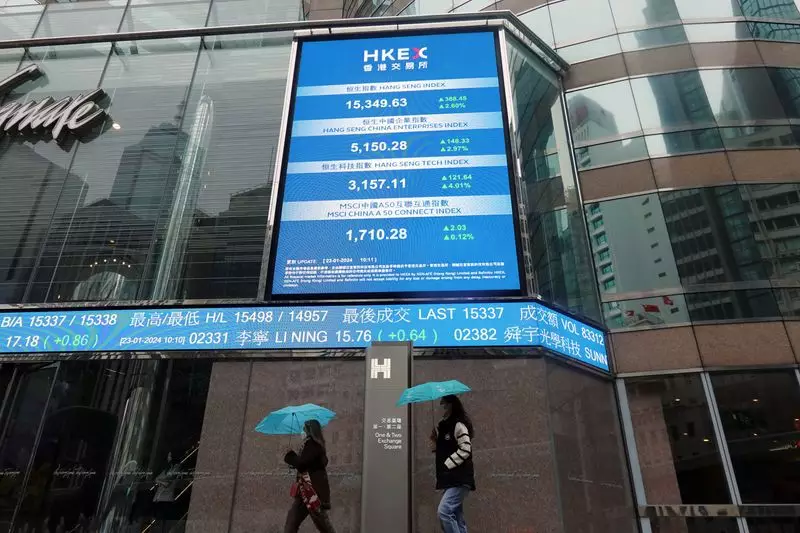As the Asian markets gear up for transaction activities on Monday, investors find themselves at a crossroads characterized by uncertainty and trepidation. The backdrop of rapidly rising U.S. bond yields, compounded by a burgeoning dollar and fluctuations witnessed on Wall Street, raises serious questions about the feasibility of investing in local assets. Fed Chair Jerome Powell’s recent statements, which indicated the central bank’s reluctance to implement any rate cuts in the near term, continue to echo throughout various global markets, contributing to an atmosphere of cautiousness.
The 10-year U.S. Treasury yield shot up to 4.50% recently—marking its highest point in over five months—an event that immediately stoked investor fears and led to a noticeable decline in Wall Street indices. Notably, the Nasdaq experienced a significant drop, losing over 2% on the day and marking its fourth consecutive day of losses—a performance reminiscent of similar downtrends seen back in April. Additionally, the MSCI World equity index’s continuous four-day losing streak raises alarms about overall market confidence, especially when contextualized against the MSCI Asia ex-Japan index’s staggering weekly decline of 4.35%, the steepest fall since mid-2022.
Emerging markets saw a pronounced impact from the dollar’s exceptional rally, which surged 1.6% last week to reach its highest level in over a year. This follow-up in momentum suggests that while some investors speculate a potential correction may be on the horizon, the existing strength of the dollar will require courage and strategic foresight to challenge effectively. The Goldman Sachs emerging market financial conditions index also experienced a spike, signaling heightened pressure on emerging economies.
Further emphasizing this exodus from emerging markets, data from EPFR Global reveals that fund outflows have remained persistent for five consecutive weeks, with bond funds experiencing acute reductions. This trend highlights investor apprehension regarding local economic stability in light of international monetary pressures.
With the Asian economic calendar appearing rather subdued for Monday, focus will likely drift towards significant economic indicators such as New Zealand’s producer prices, Japan’s machinery orders, and Singapore’s non-oil trade figures. Notably, the upcoming earnings report from Mitsubishi UFJ and Thailand’s GDP data will command scrutiny, with economists anticipating Thailand’s growth rate to accelerate to 2.6% from the previous 2.3% during the second quarter. Such growth figures would mark the most robust economic performance in a year and a half, a potentially positive sign for the Thai markets.
The Thai baht’s relative strength against the dollar, down just 1.3% year-to-date, further supports this optimism. Additionally, market analysts predict limited Bank of Thailand easing to below 50 basis points through late next year, indicating an overall measured approach towards monetary policy.
Compounding the economic landscape, strained relations between the U.S. and China continue to loom large. President Xi Jinping’s assertions regarding critical ‘red lines’ for China—namely Taiwan, democracy, human rights, and development rights—underscore the challenges ahead. Xi’s indication of willingness to collaborate with the U.S. raises an intriguing dichotomy of conflict and potential partnership, making the geopolitical climate even more complex for investors.
As Asian markets brace for further volatility, investors must navigate a labyrinth of geopolitical strains, economic indicators, and central bank policies. The interplay between strengthening U.S. yields and a resilient dollar poses significant challenges for local assets, compelling investors to reassess their strategies. Consequently, as market participants weigh their options, maintaining a vigilant eye on emerging signals of recovery or decline becomes paramount in a shifting financial landscape. The forthcoming week will prove critical in determining whether investors will continue to deploy capital into Asian markets or seek refuge in more stable environments.

